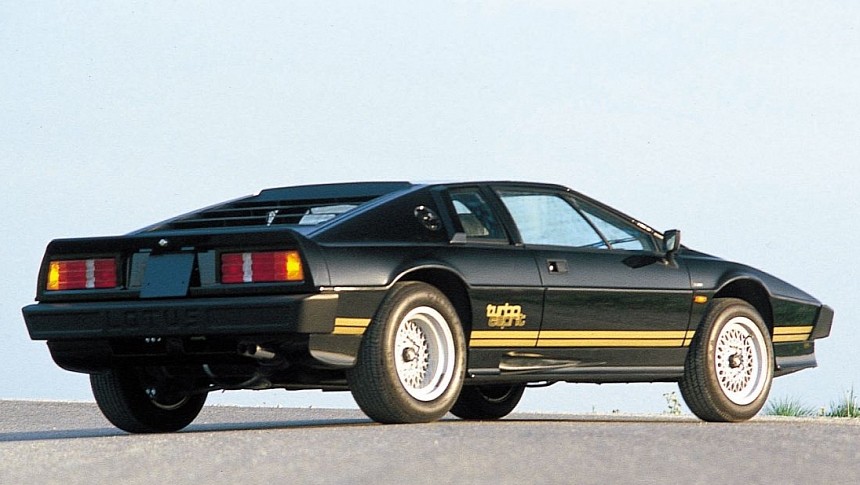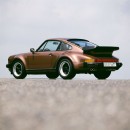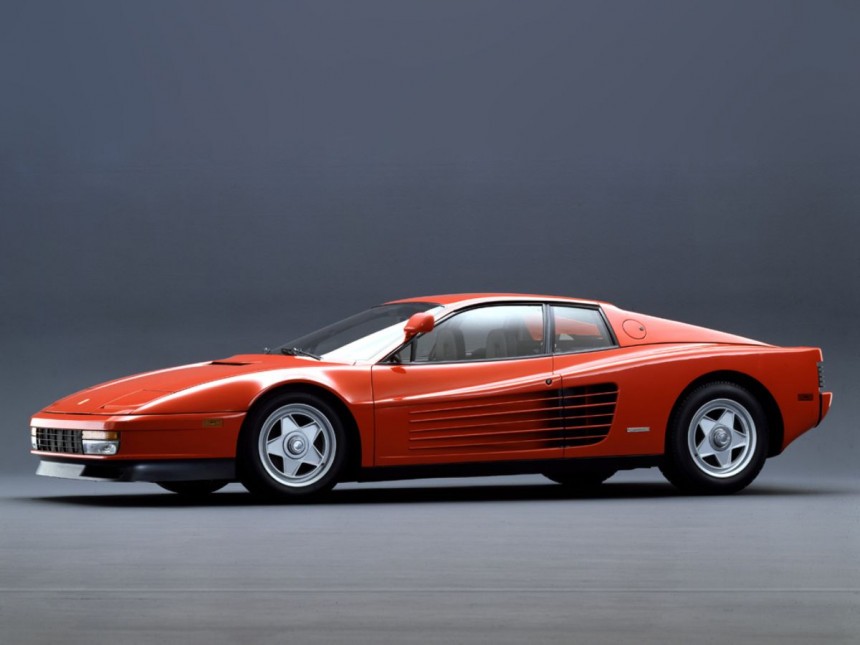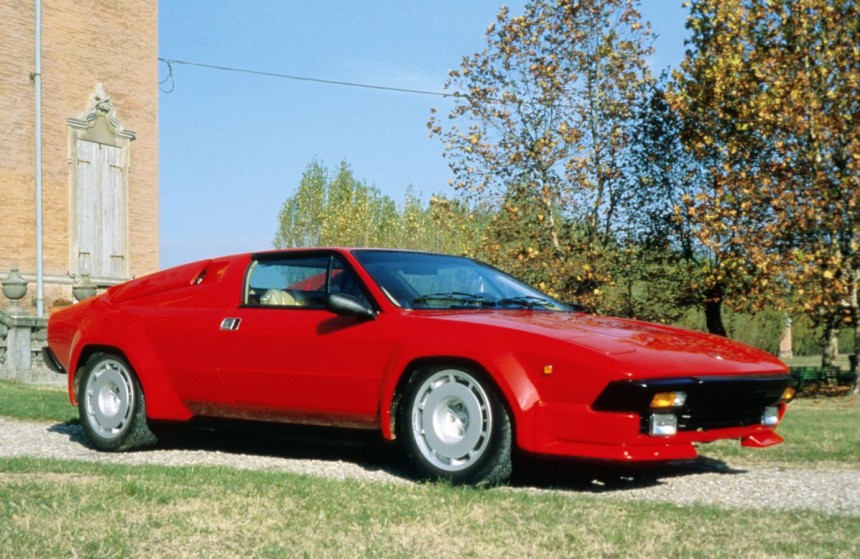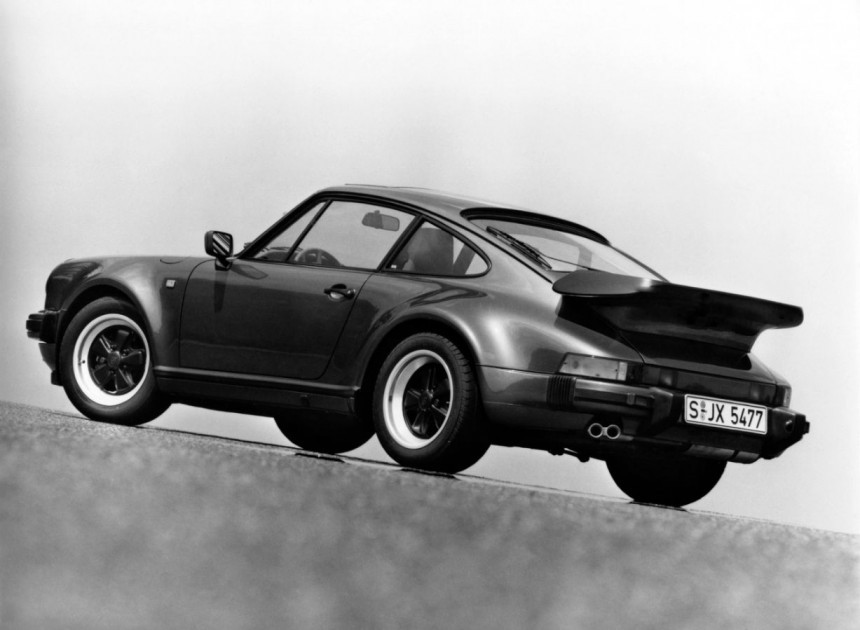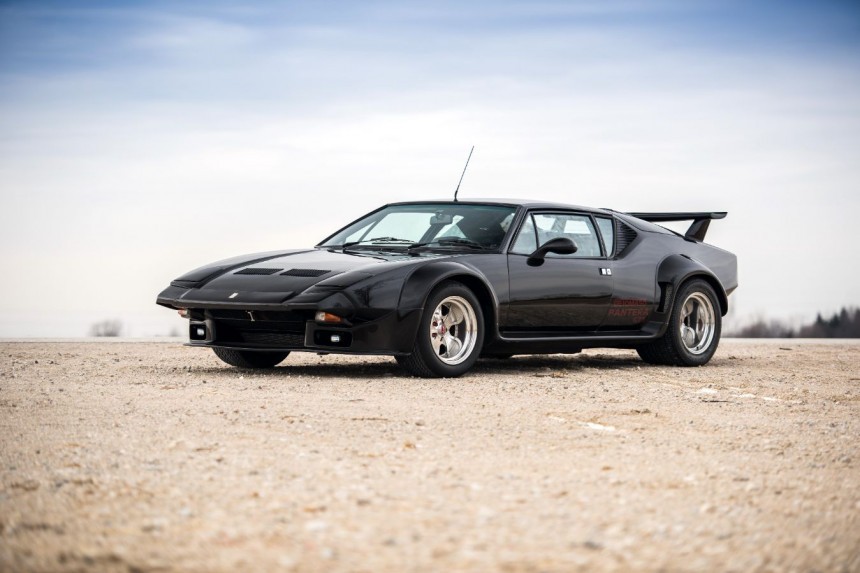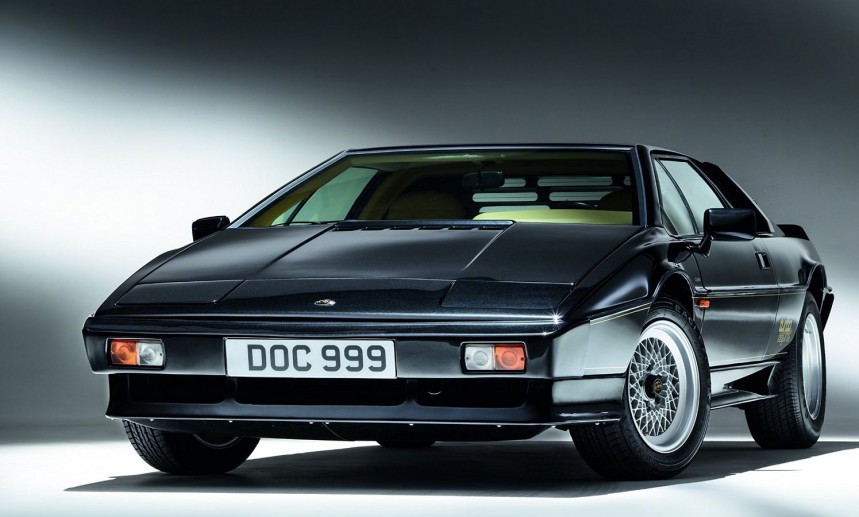Some say that the 1980s were a decade defined by bold fashion, iconic music, and an undeniable sense of optimism, especially toward the end of the Cold War. But for supercar enthusiasts, the 1980s hold an extraordinary place in their hearts.
It was when automotive excellence reached new heights, and the thrill of owning a supercar was a dream come true, much more than today when a new supercar is launched every other week.
The 1980s were a time of iconic designs, technological advancements, and a shared sense of passion and adventure. Supercars weren't just about raw power anymore; they represented cutting-edge technology for the first time.
Technical features such as turbocharging, advanced aerodynamics, and electronic fuel injection brought newfound performance and precision. It was an era of innovation, where automotive engineers pushed the boundaries of what was possible.
Owning a supercar in the 1980s meant being part of an exclusive club - an elite group of individuals who reveled in the thrill of speed and craftsmanship. Cruising down the boulevard, you could feel the gaze of envious onlookers and the admiration of fellow car enthusiasts as your supercar symbolized success and status.
Picture yourself stepping into the driver's seat of a sleek Ferrari 40 years ago, its broad rear haunches and pop-up headlights evoking a sense of awe and anticipation. The throaty roar of a twelve-cylinder engine ignites a rush of adrenaline as you embark on a journey that merges style and speed in perfect harmony.
Is that no longer the case today? Fret not; many supercars born in the '80s are still alive today and not all still command seven-figure prices. Four decades later, many supercars have skyrocketed in value while others have stagnated or even depreciated to the point they cost as much as a new family SUV.
With that last part in mind, today we'll explore the coolest supercars of the 1980s that you can still get your hands on nowadays without breaking the bank.
In the vibrant era of the 1980s, one car reigned supreme as the symbol of opulence, power, and unmistakable style: the Ferrari Testarossa. With its distinctive design, blistering performance, and timeless allure, the Testarossa became an icon that defined an entire generation of automotive enthusiasts, and many people find it the quintessential supercar of the 1980s.
The Testarossa commands attention with its wide and muscular stance, accentuated by its signature side strakes that adorn the car's flanks. The sharp edges and bold lines create a visual drama that is unmistakably 1980s. With that in mind, it's a design that has stood the test of time, still turning heads decades after its inception.
Debuting at the Paris Motor Show in 1984, the Ferrari Testarossa made a huge impression with its radical design penned by Pininfarina. Its signature side strakes, which earned it the "Testarossa" name (meaning "redhead" in Italian), captured the imagination of enthusiasts worldwide. Beneath the skin, a 4.9-liter flat-12 engine roared to life, producing 385 HP (390 PS), 361 lb-ft (490 Nm) of torque, and capable of propelling the car from 0 to 62 mph (100 kph) in 5.8 seconds.
The Testarossa's technical brilliance extended beyond its eye-catching aesthetics. It featured a mid-mounted engine layout, improving weight distribution and handling. The suspension was tuned to deliver a balanced blend of comfort and sportiness, while ventilated disc brakes provided exceptional stopping power. Sumptuous leather upholstery adorned the seats inside the cabin and a range of luxurious amenities catered to the discerning driver.
When first introduced, the Ferrari Testarossa carried a price tag of around $181,000 (equivalent to approximately $517,000 in 2023), placing it firmly in the realm of high-end supercars. In recent years, the Testarossa has become a highly sought-after classic, and its value has shifted accordingly, but that depends on several variable factors. Prices for well-maintained examples now range from $125,000 to $150,000 (111,000 to 133,000 Euros), with exceptionally low-mileage or rare models commanding much higher sums.
The Ferrari Testarossa's iconic status endures to this day, with its wedge-shaped silhouette and flamboyant presence captivating enthusiasts across generations. Its influence is felt in the automotive world and popular culture, as it symbolized success and excess during the vibrant '80s.
The Jalpa made its grand debut at the Geneva Motor Show in March of 1981 and, despite being an entry-level model in the Lamborghini lineup, captivated attendees with its audacious design and high-performance pedigree. True to Lamborghini's tradition, the Jalpa drew its name from the courageous Jalpa Kandachia breed of fighting bulls, embodying the brand's ferocious spirit. Serving as the final evolution of Lamborghini's rear-mid engine sportscar concept with a V8, the Jalpa showcased the culmination of years of refinement.
Building upon the foundation established by the Urraco and Silhouette projects, the Jalpa retained the core architectural elements while incorporating significant advancements. Its heart was still a V8 but enlarged to a 3.5-liter displacement, composed almost entirely of lightweight aluminum.
This compact powerhouse featured four chain-controlled overhead camshafts, employed initially in the Urraco and Silhouette models. The increased bore, combined with four Weber 42 DCNF twin carburetors and a compression ratio of 9.2:1, enabled the Jalpa to unleash 255 HP (259 PS) and 225 lb-ft (305 Nm) of torque.
These impressive specifications propelled the Jalpa to a top speed of 248 kph (154 mph), delivering a thrilling 6-second acceleration from o to 62 mph (100 kph) and an unforgettable driving experience thanks to the mid-engine design and lightness.
The design language, including the distinctive targa opening roof, was masterfully crafted by renowned French designer Marc Deschamps of Carrozzeria Bertone, with invaluable input and partial design contributions from Giulio Alfieri. At the time, Alfieri, serving as General Manager and Technical Director of Lamborghini, lent his expertise to shape the Jalpa's aesthetics and performance capabilities.
With its razor-sharp aesthetics, roaring V8 engine, and uncompromising performance, the Jalpa captured the hearts of only 410 automotive enthusiasts during a 7-year production run. However, their exclusivity doesn't mean one will cost an arm and a leg nowadays.
When released, the Lamborghini Jalpa commanded a price tag of approximately $58,000 (52,000 Euros), the equivalent of around $190,000 (170,000 Euros) in today's money - well within reach of passionate enthusiasts seeking an Italian thoroughbred. The Jalpa has become a coveted classic nowadays, but prices don't necessarily reflect its desirability. Well-maintained examples can range from $80,000 to $120,000 (71,000 to 107,000 Euros), depending on condition and mileage. Pristine and low-mileage models may command higher prices.
Even though an initial version was launched back in the '70s, it was the 1980s that saw the Porsche 911 Turbo (930) emerge as a force to be reckoned with, embodying the essence of raw power and adrenaline-infused driving pleasure that Porsche is still known for. A symbol of automotive prowess, this air-cooled legend captivated enthusiasts with its unmistakable style, blistering performance, and intoxicating exhaust note.
Heralded as the flagship of Porsche's lineup, the 1986 U.S. version of the Porsche 930 was a true testament to the marque's engineering brilliance. The robust 3.3-liter air-cooled flat-six engine nestled in its rear delivered 282 PS (286 PS), propelling the model from 0 to 62 mph (100 kph) in a mere 5.0 seconds.
The European version was even sportier, with the flat-six in the back allowed to develop no less than 325 HP (330) and 319 lb-ft (432 Nm) of torque with the optional Werksleistungssteigerung (WLS, "Works Performance Increase") add-on, which included a quad-pipe exhaust system and an extra intercooler.
Beyond its awe-inspiring performance, the 930 Turbo boasted a host of cutting-edge features. A five-speed manual transmission provided direct engagement with the road, while powerful four-piston ventilated disc brakes ensured razor-sharp stopping capabilities. The 930 Turbo's sport-tuned suspension, equipped with Porsche's legendary steering feel and rear-wheel-drive, delivered a harmonious blend of precision and exhilaration.
In 1986, the Porsche 930 Turbo was priced at approximately $55,000, positioning it as an aspirational supercar for discerning enthusiasts. Today, this iconic air-cooled legend has attained an esteemed status among collectors and driving purists.
Pristine examples can command a price tag upward of $150,000 (134,000 Euros), depending on condition, mileage, and provenance. However, those seeking an authentic Porsche driving experience may find well-maintained units starting at around $100,000 (89,000 euros) or even less, making it a reasonably priced addition to any collection.
In the heyday of the '70s, the DeTomaso Pantera emerged as a striking blend of Italian flair and American muscle. Its exotic aesthetics, raucous V8 power, and somewhat accessible price tag endeared it to a diverse audience of enthusiasts. With a host of technical and visual improvements, the Pantera stayed in production from 1971 until 1992, so it still never looks out of place in the '80s, on the contrary.
Today, the Pantera remains a cherished classic, symbolizing the alluring union of European styling and American brawn. Penned by the celebrated Italian designer Tom Tjaarda, the DeTomaso Pantera radiated elegance and charisma from every angle.
Its sleek lines, mid-engine layout, and wide-body look exuded an air of exclusivity. The true magic lay under the rear deck, where a Ford-sourced 5.8-liter V8 engine made 345 HP (350 PS) and 333 lb-ft (451 Nm) of torque in the '80s. This mesmerizing combination of Italian styling and American horsepower made the Pantera an automotive icon that captured the hearts of enthusiasts worldwide.
Beneath its seductive bodywork, the Pantera boasted a robust backbone. The mid-mounted V8 engine mated to a five-speed ZF manual transmission delivered exhilarating acceleration and top speeds reaching 174 mph (280 kph). The Pantera's independent suspension and power-assisted four-wheel disc brakes provided confident handling and precise control. Inside, the driver-centric cockpit offered a seamless blend of comfort and functionality, accentuating the Pantera's versatility as both a grand tourer and a thrilling mid-engine sports car.
Upon its introduction in 1971, the DeTomaso Pantera carried a sticker price of around $10,000 ($73,000 in today's money), positioning it as a formidable competitor to established European sports cars of the time at a fraction of the cost.
Today, the model remains a highly sought-after classic, no matter the decade it was made in, with values reflecting its revered status. Well-maintained examples can command prices ranging from $80,000 to $200,000 (72,000 to 180,000 Euros) depending on condition, mileage, and provenance. Pristine models with documented history may even reach higher figures, making the Pantera a coveted collector's gem.
Like the DeTomaso Pantera, the Lotus Esprit first arrived in the early 1970s and stayed in production in various forms for almost three decades. As far as the '80s version of the sports car, the Lotus Turbo Esprit Series 3 stood out as a ferocious predator, combining stunning aesthetics with exhilarating performance. With its sleek design and agile handling, the Turbo Esprit S3 charmed enthusiasts seeking a harmonious blend of speed and style in a lightweight package.
The Lotus Turbo Esprit S3 was a testament to Lotus' design prowess, boasting an aerodynamic body that looked like it could slice through the air, just like its two predecessors from the 1970s. Its wedge-shaped profile and signature pop-up headlights exuded sophistication and exotic allure, despite not costing as much as a supercar of the time.
Beneath the captivating exterior sat a turbocharged 2.2-liter inline-four engine right in the middle of the car, generating up to 215 HP (218 PS) and 220 lb-ft (298 Nm) of torque from 1985 upward. Mated to a five-speed transaxle manual transmission borrowed from Citroen, the Turbo Esprit catapulted from 0 to 62 mph in just 6 seconds, with a top speed of 152 mph (245 kph). These numbers were primarily possible thanks to a 2,800 (1,270 kg) dry weight, which resulted in a fantastic power-to-weight ratio.
Built around a lightweight steel backbone chassis, the Esprit S3 featured independent suspension and four-wheel disc brakes, enabling precise control and agile maneuverability, like a true Lotus. T
he turbocharged engine was equipped with electronic fuel injection in 1985, enhancing performance and fuel efficiency, while initial models featured a dual Dell'Orto carburetor system fitted directly to the turbocharger. Inside, the driver-centric cockpit offered a blend of luxury and functionality, with supportive leather seats and a sporty steering wheel.
In the '80s, the Lotus Turbo Esprit S3 was priced at approximately $48,000 in the U.S., equivalent to about $143,000 in today's money, positioning it as a more accessible alternative to other European exotics with similar performance.
Today, the Turbo Esprit has become a cherished classic, coveted by collectors and driving enthusiasts alike without breaking the bank. Prices for well-maintained examples typically range from as low as $25,000 to $60,000 (22,000 to 54,000 Euros), depending on condition, mileage, and provenance. Immaculate, low-mileage models or those with unique features will obviously command higher figures but still much lower than a modern supercar.
The 1980s were a time of iconic designs, technological advancements, and a shared sense of passion and adventure. Supercars weren't just about raw power anymore; they represented cutting-edge technology for the first time.
Technical features such as turbocharging, advanced aerodynamics, and electronic fuel injection brought newfound performance and precision. It was an era of innovation, where automotive engineers pushed the boundaries of what was possible.
Owning a supercar in the 1980s meant being part of an exclusive club - an elite group of individuals who reveled in the thrill of speed and craftsmanship. Cruising down the boulevard, you could feel the gaze of envious onlookers and the admiration of fellow car enthusiasts as your supercar symbolized success and status.
Picture yourself stepping into the driver's seat of a sleek Ferrari 40 years ago, its broad rear haunches and pop-up headlights evoking a sense of awe and anticipation. The throaty roar of a twelve-cylinder engine ignites a rush of adrenaline as you embark on a journey that merges style and speed in perfect harmony.
Is that no longer the case today? Fret not; many supercars born in the '80s are still alive today and not all still command seven-figure prices. Four decades later, many supercars have skyrocketed in value while others have stagnated or even depreciated to the point they cost as much as a new family SUV.
With that last part in mind, today we'll explore the coolest supercars of the 1980s that you can still get your hands on nowadays without breaking the bank.
Ferrari Testarossa
The Testarossa commands attention with its wide and muscular stance, accentuated by its signature side strakes that adorn the car's flanks. The sharp edges and bold lines create a visual drama that is unmistakably 1980s. With that in mind, it's a design that has stood the test of time, still turning heads decades after its inception.
Debuting at the Paris Motor Show in 1984, the Ferrari Testarossa made a huge impression with its radical design penned by Pininfarina. Its signature side strakes, which earned it the "Testarossa" name (meaning "redhead" in Italian), captured the imagination of enthusiasts worldwide. Beneath the skin, a 4.9-liter flat-12 engine roared to life, producing 385 HP (390 PS), 361 lb-ft (490 Nm) of torque, and capable of propelling the car from 0 to 62 mph (100 kph) in 5.8 seconds.
The Testarossa's technical brilliance extended beyond its eye-catching aesthetics. It featured a mid-mounted engine layout, improving weight distribution and handling. The suspension was tuned to deliver a balanced blend of comfort and sportiness, while ventilated disc brakes provided exceptional stopping power. Sumptuous leather upholstery adorned the seats inside the cabin and a range of luxurious amenities catered to the discerning driver.
When first introduced, the Ferrari Testarossa carried a price tag of around $181,000 (equivalent to approximately $517,000 in 2023), placing it firmly in the realm of high-end supercars. In recent years, the Testarossa has become a highly sought-after classic, and its value has shifted accordingly, but that depends on several variable factors. Prices for well-maintained examples now range from $125,000 to $150,000 (111,000 to 133,000 Euros), with exceptionally low-mileage or rare models commanding much higher sums.
The Ferrari Testarossa's iconic status endures to this day, with its wedge-shaped silhouette and flamboyant presence captivating enthusiasts across generations. Its influence is felt in the automotive world and popular culture, as it symbolized success and excess during the vibrant '80s.
Lamborghini Jalpa P350
Building upon the foundation established by the Urraco and Silhouette projects, the Jalpa retained the core architectural elements while incorporating significant advancements. Its heart was still a V8 but enlarged to a 3.5-liter displacement, composed almost entirely of lightweight aluminum.
This compact powerhouse featured four chain-controlled overhead camshafts, employed initially in the Urraco and Silhouette models. The increased bore, combined with four Weber 42 DCNF twin carburetors and a compression ratio of 9.2:1, enabled the Jalpa to unleash 255 HP (259 PS) and 225 lb-ft (305 Nm) of torque.
These impressive specifications propelled the Jalpa to a top speed of 248 kph (154 mph), delivering a thrilling 6-second acceleration from o to 62 mph (100 kph) and an unforgettable driving experience thanks to the mid-engine design and lightness.
The design language, including the distinctive targa opening roof, was masterfully crafted by renowned French designer Marc Deschamps of Carrozzeria Bertone, with invaluable input and partial design contributions from Giulio Alfieri. At the time, Alfieri, serving as General Manager and Technical Director of Lamborghini, lent his expertise to shape the Jalpa's aesthetics and performance capabilities.
With its razor-sharp aesthetics, roaring V8 engine, and uncompromising performance, the Jalpa captured the hearts of only 410 automotive enthusiasts during a 7-year production run. However, their exclusivity doesn't mean one will cost an arm and a leg nowadays.
When released, the Lamborghini Jalpa commanded a price tag of approximately $58,000 (52,000 Euros), the equivalent of around $190,000 (170,000 Euros) in today's money - well within reach of passionate enthusiasts seeking an Italian thoroughbred. The Jalpa has become a coveted classic nowadays, but prices don't necessarily reflect its desirability. Well-maintained examples can range from $80,000 to $120,000 (71,000 to 107,000 Euros), depending on condition and mileage. Pristine and low-mileage models may command higher prices.
Porsche 911 Turbo (930)
Heralded as the flagship of Porsche's lineup, the 1986 U.S. version of the Porsche 930 was a true testament to the marque's engineering brilliance. The robust 3.3-liter air-cooled flat-six engine nestled in its rear delivered 282 PS (286 PS), propelling the model from 0 to 62 mph (100 kph) in a mere 5.0 seconds.
The European version was even sportier, with the flat-six in the back allowed to develop no less than 325 HP (330) and 319 lb-ft (432 Nm) of torque with the optional Werksleistungssteigerung (WLS, "Works Performance Increase") add-on, which included a quad-pipe exhaust system and an extra intercooler.
Beyond its awe-inspiring performance, the 930 Turbo boasted a host of cutting-edge features. A five-speed manual transmission provided direct engagement with the road, while powerful four-piston ventilated disc brakes ensured razor-sharp stopping capabilities. The 930 Turbo's sport-tuned suspension, equipped with Porsche's legendary steering feel and rear-wheel-drive, delivered a harmonious blend of precision and exhilaration.
In 1986, the Porsche 930 Turbo was priced at approximately $55,000, positioning it as an aspirational supercar for discerning enthusiasts. Today, this iconic air-cooled legend has attained an esteemed status among collectors and driving purists.
Pristine examples can command a price tag upward of $150,000 (134,000 Euros), depending on condition, mileage, and provenance. However, those seeking an authentic Porsche driving experience may find well-maintained units starting at around $100,000 (89,000 euros) or even less, making it a reasonably priced addition to any collection.
DeTomaso Pantera
Today, the Pantera remains a cherished classic, symbolizing the alluring union of European styling and American brawn. Penned by the celebrated Italian designer Tom Tjaarda, the DeTomaso Pantera radiated elegance and charisma from every angle.
Its sleek lines, mid-engine layout, and wide-body look exuded an air of exclusivity. The true magic lay under the rear deck, where a Ford-sourced 5.8-liter V8 engine made 345 HP (350 PS) and 333 lb-ft (451 Nm) of torque in the '80s. This mesmerizing combination of Italian styling and American horsepower made the Pantera an automotive icon that captured the hearts of enthusiasts worldwide.
Beneath its seductive bodywork, the Pantera boasted a robust backbone. The mid-mounted V8 engine mated to a five-speed ZF manual transmission delivered exhilarating acceleration and top speeds reaching 174 mph (280 kph). The Pantera's independent suspension and power-assisted four-wheel disc brakes provided confident handling and precise control. Inside, the driver-centric cockpit offered a seamless blend of comfort and functionality, accentuating the Pantera's versatility as both a grand tourer and a thrilling mid-engine sports car.
Upon its introduction in 1971, the DeTomaso Pantera carried a sticker price of around $10,000 ($73,000 in today's money), positioning it as a formidable competitor to established European sports cars of the time at a fraction of the cost.
Today, the model remains a highly sought-after classic, no matter the decade it was made in, with values reflecting its revered status. Well-maintained examples can command prices ranging from $80,000 to $200,000 (72,000 to 180,000 Euros) depending on condition, mileage, and provenance. Pristine models with documented history may even reach higher figures, making the Pantera a coveted collector's gem.
Lotus Turbo Esprit S3
The Lotus Turbo Esprit S3 was a testament to Lotus' design prowess, boasting an aerodynamic body that looked like it could slice through the air, just like its two predecessors from the 1970s. Its wedge-shaped profile and signature pop-up headlights exuded sophistication and exotic allure, despite not costing as much as a supercar of the time.
Beneath the captivating exterior sat a turbocharged 2.2-liter inline-four engine right in the middle of the car, generating up to 215 HP (218 PS) and 220 lb-ft (298 Nm) of torque from 1985 upward. Mated to a five-speed transaxle manual transmission borrowed from Citroen, the Turbo Esprit catapulted from 0 to 62 mph in just 6 seconds, with a top speed of 152 mph (245 kph). These numbers were primarily possible thanks to a 2,800 (1,270 kg) dry weight, which resulted in a fantastic power-to-weight ratio.
Built around a lightweight steel backbone chassis, the Esprit S3 featured independent suspension and four-wheel disc brakes, enabling precise control and agile maneuverability, like a true Lotus. T
he turbocharged engine was equipped with electronic fuel injection in 1985, enhancing performance and fuel efficiency, while initial models featured a dual Dell'Orto carburetor system fitted directly to the turbocharger. Inside, the driver-centric cockpit offered a blend of luxury and functionality, with supportive leather seats and a sporty steering wheel.
In the '80s, the Lotus Turbo Esprit S3 was priced at approximately $48,000 in the U.S., equivalent to about $143,000 in today's money, positioning it as a more accessible alternative to other European exotics with similar performance.
Today, the Turbo Esprit has become a cherished classic, coveted by collectors and driving enthusiasts alike without breaking the bank. Prices for well-maintained examples typically range from as low as $25,000 to $60,000 (22,000 to 54,000 Euros), depending on condition, mileage, and provenance. Immaculate, low-mileage models or those with unique features will obviously command higher figures but still much lower than a modern supercar.
